April 24 to April 30
Civil engineer Chin Heng (靳珩) was inspecting the construction of the Central Cross-Island Highway in October 1957 when he was struck by a rock. Along with an unfinished bridge and several crew members, he fell into the gorge below. About five months later, five workers were buried in a landslide caused by blasting the rock with dynamite. And in July 1958, a typhoon flooded a construction site, killing dozens.
It was a momentous task cutting through Taiwan’s central mountain range, with about 5,000 people working with only dynamite and pickaxes. The terrain was not accessible by machinery and most of the work was done by hand.
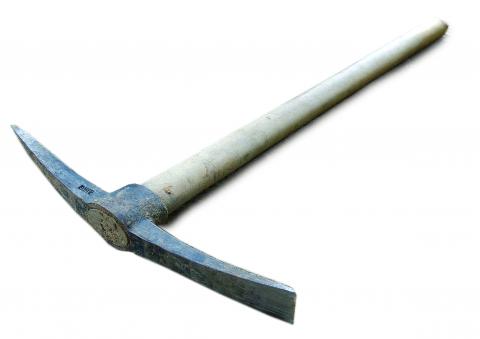
Photo courtesy of Wikimedia Commons
Huang Chao-chung (黃肇中) writes in Travels in the Central Mountain Range: Inspecting the Cross-Island Highway (中央山脈之旅:橫貫公路複勘散記), a book detailing his experiences as part of the initial survey crew, that there were few transportation options on the east coast at the time. A railroad connected Hualien and Taitung, but it was frequently closed due to floods. The only road connecting the area to the west was the Suhua Highway (蘇花公路), which was a narrow, one-way road frequently closed due to bad weather. There were flights from Taichung to Hualien, but Huang says that a road was needed to service the points in between.
In addition to economic and military benefits, Huang also saw tourism opportunities for Taroko Gorge, which had been inaccessible since the end of World War II due to landslides and neglect of roads built during Japanese colonial rule.
MILITARY VETERAN WORKFORCE
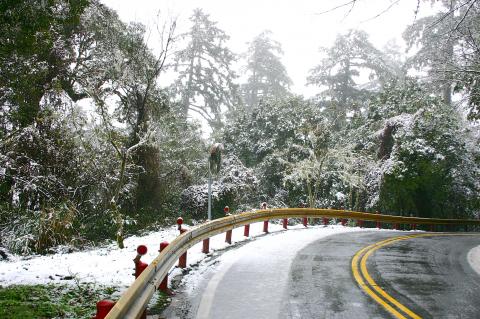
Photo: Yang Yi-chung, Taipei Times
The process took almost four years, and by the time construction wrapped up on April 25, 1960, the official death toll stood at 212. A bridge was named in Chin’s honor, but not much is known about his life — except that like the five men in the other report, he came to Taiwan with the Chinese Nationalist Party (KMT) after the Chinese Civil War.
In fact, more than half of the roughly 10,000 laborers who worked on the highway were KMT military veterans. The workforce was bolstered by soldiers, civilians, military and regular criminals, unemployed young men as well as students undergoing military training.
Chin Shang-teh (金尚德) writes in his book One Hundred Years on the Liwu River (百年立霧溪) that military veterans were assigned to the most dangerous areas of the project and suffered the majority of the casualties.
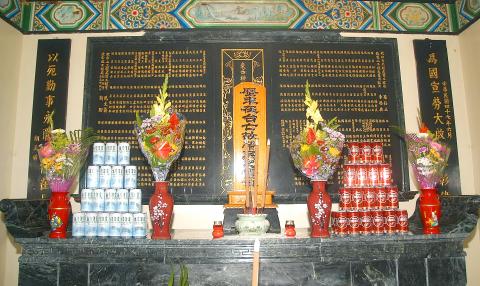
Photo: You Tai-lang, Taipei Times
Documents from the Martial Law era state that the veterans were more than happy to sacrifice themselves and perform such a dangerous task for the sake of the country. A 1972 government publication describes how a group of veterans were willing to forfeit their pay because they knew that the project was experiencing financial difficulties.
“They are able to channel their determination to sacrifice themselves on the battlefield and perform at the highest efficiency,” it says.
In a 1956 article, the Central Daily News details the workers’ “carefree and happy” lives living on the construction site. They sing, drink and dance, and one falls in love with an Aboriginal woman.
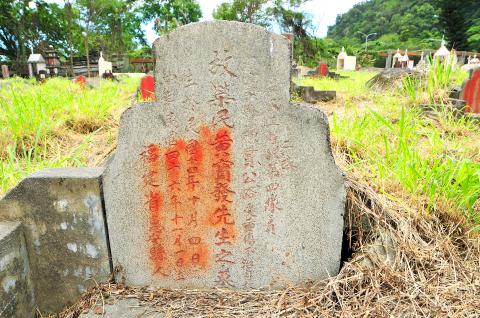
Photo: Hua Meng-ching, Taipei Times
“They’re not only used to life here, they’ve grown to love it,” the article says. “Many turned down other job offers just to remain here. There’s a lot of freedom, and the work is meaningful. Nobody is forced to work; they rest and leave whenever they want. But nobody is willing to leave.”
FORCED LABOR?
However, when writer and historian Kuan Jen-chien (管人建) interviewed a worker in 1984 while doing research for a novel, the worker exclaimed, “It’s a pity! These people survived the cannons of the Japanese and the Communist troops, arrive in Taiwan and remove their army fatigues only to be killed by the dynamite that I set off!”
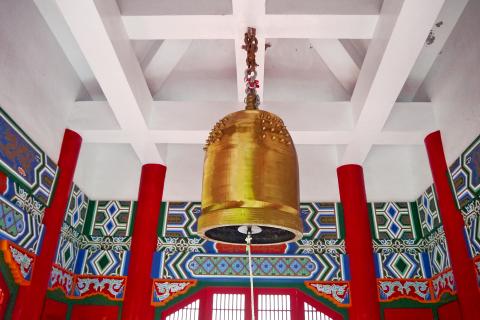
Photo: Wang Chun-chi, Taipei Times
Kuan writes that soldiers were ordered to retire after arriving in Taiwan. Since many remained military reserves who were still being paid and receiving benefits, they were sent to help the government with construction projects.
“They were not able to come and go as they pleased, and were bound to their construction team,” Kuan writes. He adds that since most of these men were single, the government preferred to assign them to the dangerous jobs so they wouldn’t have a negative impact on society.
Lee Jui-tsung (李瑞宗) presents more evidence in A Half Century of Lost Memories — The Central Cross-Island Highway of Taiwan (天命行腳 — 中橫半世紀).
“Military veterans need to strictly follow the rules. They are not allowed to decide where they want to work or refuse the work assigned to them. All those that violate this rule shall be punished without leniency,” according to a 1957 meeting of project supervisors.
Lee adds that while it is unclear if all veterans were forced to work on the highway, he spoke to two who were discharged and sent to work after being reported for unpatriotic behavior.
Chin writes that besides national defense and economic benefits, the highway was also a way to deal with the former KMT soldiers, which the nation no longer needed especially because of the 1954 Sino-American Mutual Defense Treaty.
The government also settled the military veterans alongside the highway to isolate them. Chin writes that with the government’s help they farmed, raised silkworms, grew mulberries and tended to livestock.
“They became the newest residents of the valley. Most spent the rest of their lives here,” he writes.
Taiwan in Time, a column about Taiwan’s history that is published every Sunday, spotlights important or interesting events around the nation that have anniversaries this week.

June 2 to June 8 Taiwan’s woodcutters believe that if they see even one speck of red in their cooked rice, no matter how small, an accident is going to happen. Peng Chin-tian (彭錦田) swears that this has proven to be true at every stop during his decades-long career in the logging industry. Along with mining, timber harvesting was once considered the most dangerous profession in Taiwan. Not only were mishaps common during all stages of processing, it was difficult to transport the injured to get medical treatment. Many died during the arduous journey. Peng recounts some of his accidents in

Taiwan Power Co (Taipower, 台電) and the New Taipei City Government in May last year agreed to allow the activation of a spent fuel storage facility for the Jinshan Nuclear Power Plant in Shihmen District (石門). The deal ended eleven years of legal wrangling. According to the Taipower announcement, the city government engaged in repeated delays, failing to approve water and soil conservation plans. Taipower said at the time that plans for another dry storage facility for the Guosheng Nuclear Power Plant in New Taipei City’s Wanli District (萬里) remained stuck in legal limbo. Later that year an agreement was reached

What does the Taiwan People’s Party (TPP) in the Huang Kuo-chang (黃國昌) era stand for? What sets it apart from their allies, the Chinese Nationalist Party (KMT)? With some shifts in tone and emphasis, the KMT’s stances have not changed significantly since the late 2000s and the era of former president Ma Ying-jeou (馬英九). The Democratic Progressive Party’s (DPP) current platform formed in the mid-2010s under the guidance of Tsai Ing-wen (蔡英文), and current President William Lai (賴清德) campaigned on continuity. Though their ideological stances may be a bit stale, they have the advantage of being broadly understood by the voters.

In a high-rise office building in Taipei’s government district, the primary agency for maintaining links to Thailand’s 108 Yunnan villages — which are home to a population of around 200,000 descendants of the Chinese Nationalist Party (KMT) armies stranded in Thailand following the Chinese Civil War — is the Overseas Community Affairs Council (OCAC). Established in China in 1926, the OCAC was born of a mandate to support Chinese education, culture and economic development in far flung Chinese diaspora communities, which, especially in southeast Asia, had underwritten the military insurgencies against the Qing Dynasty that led to the founding of